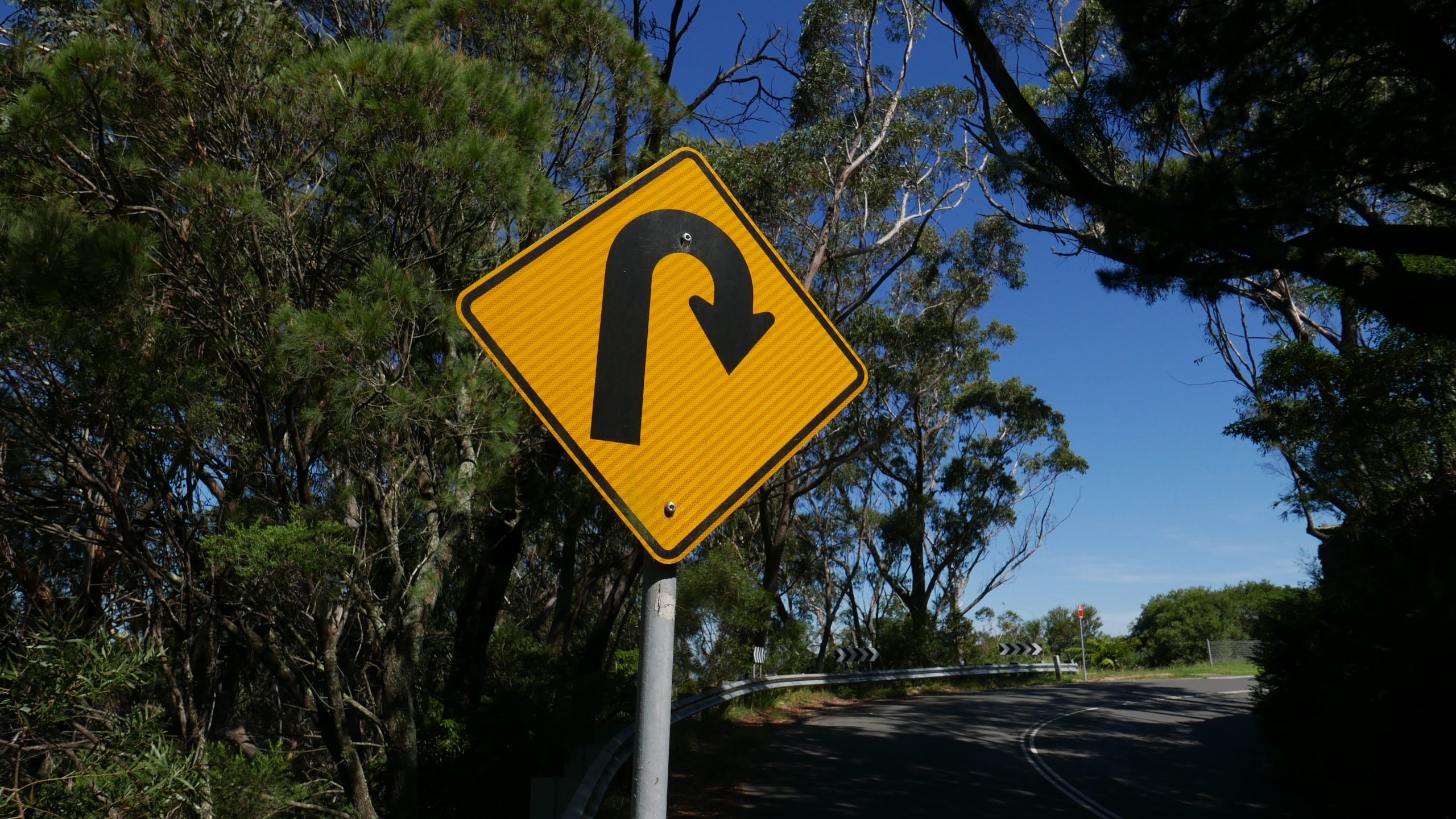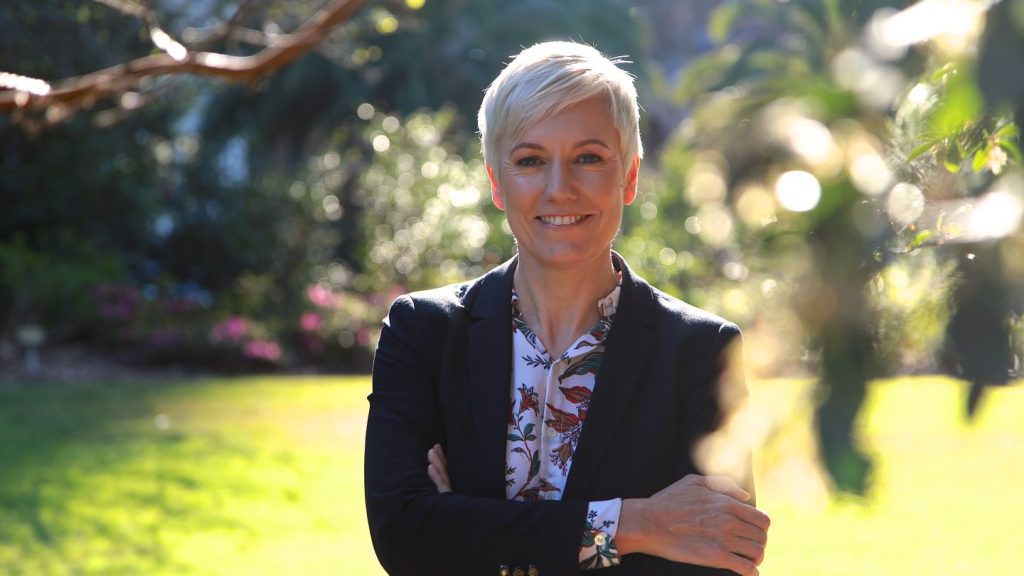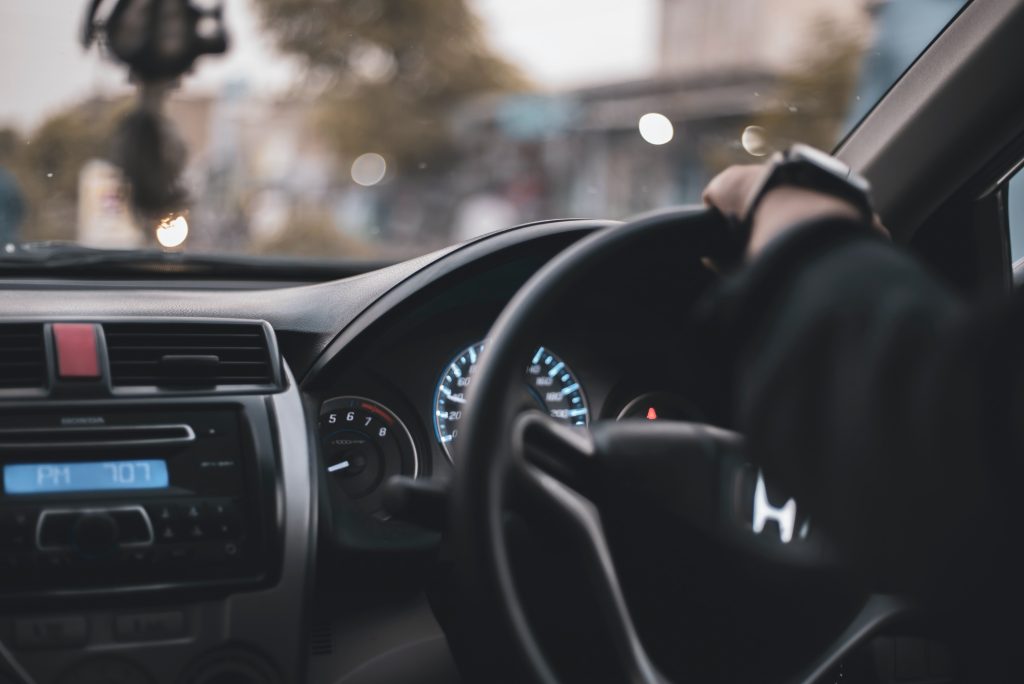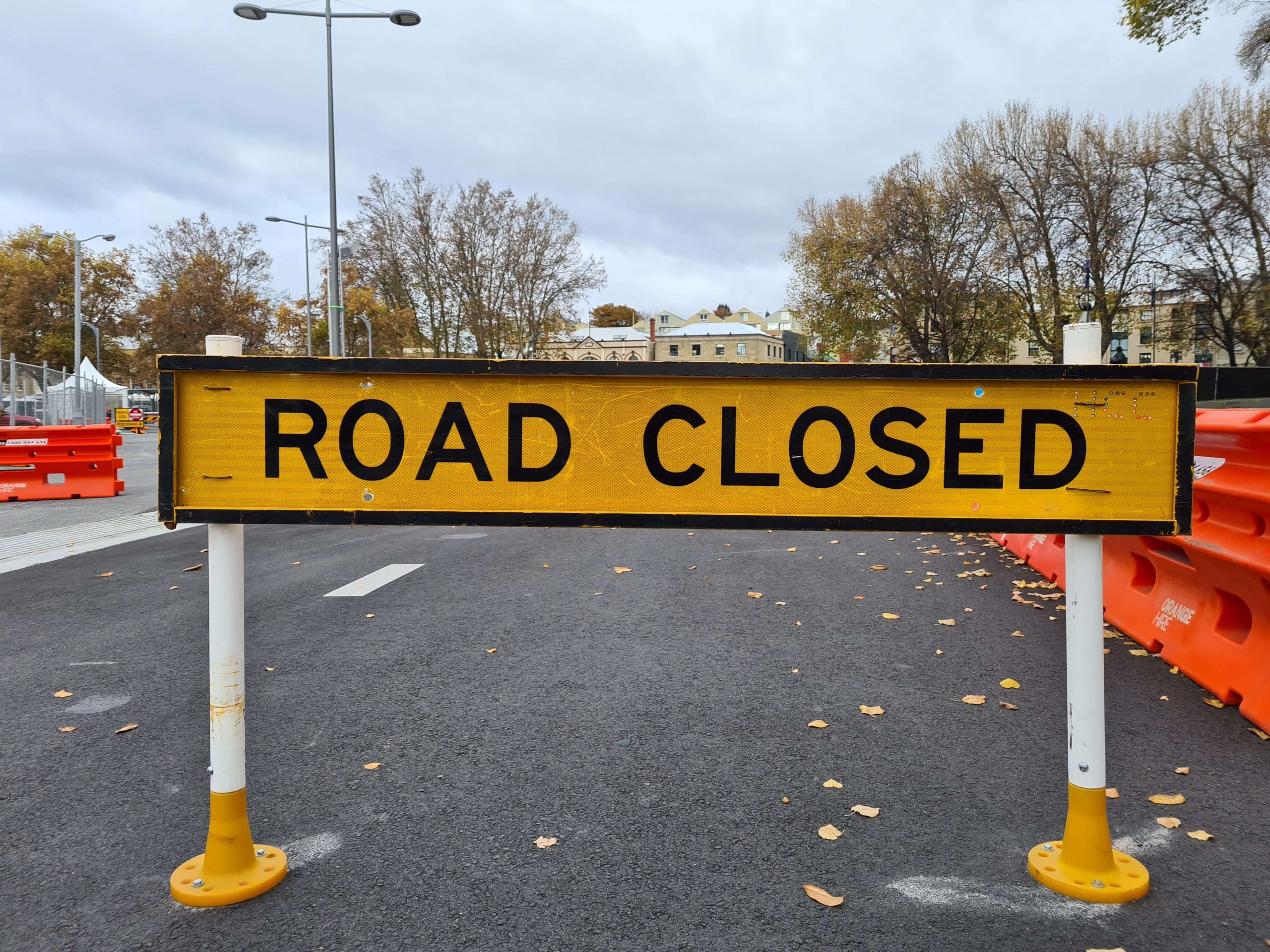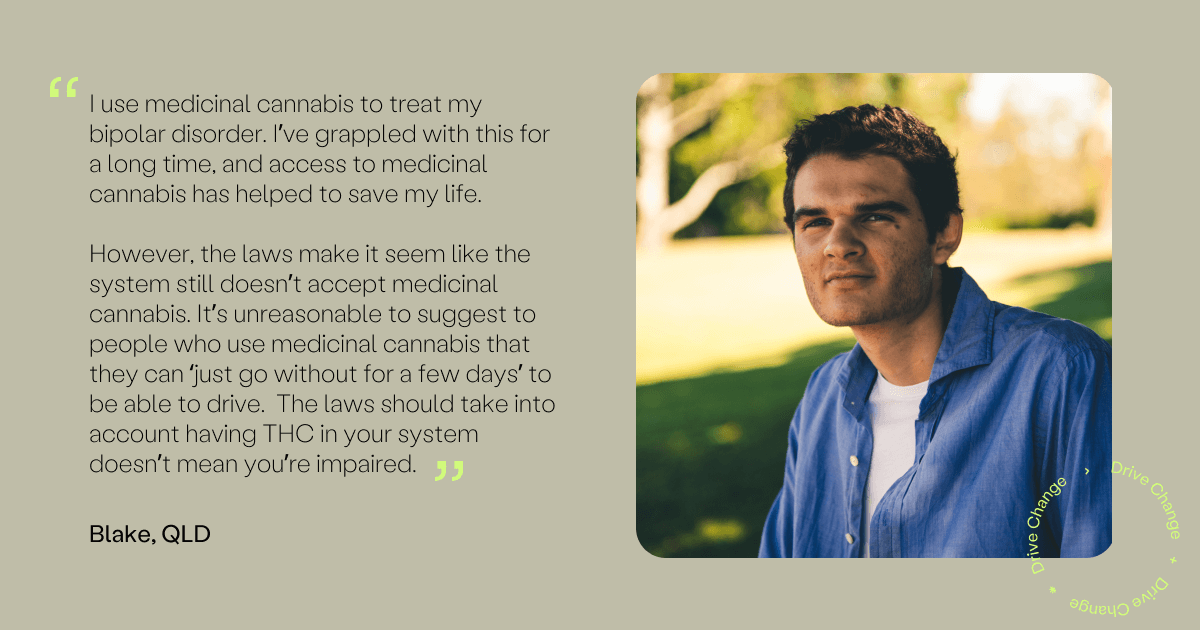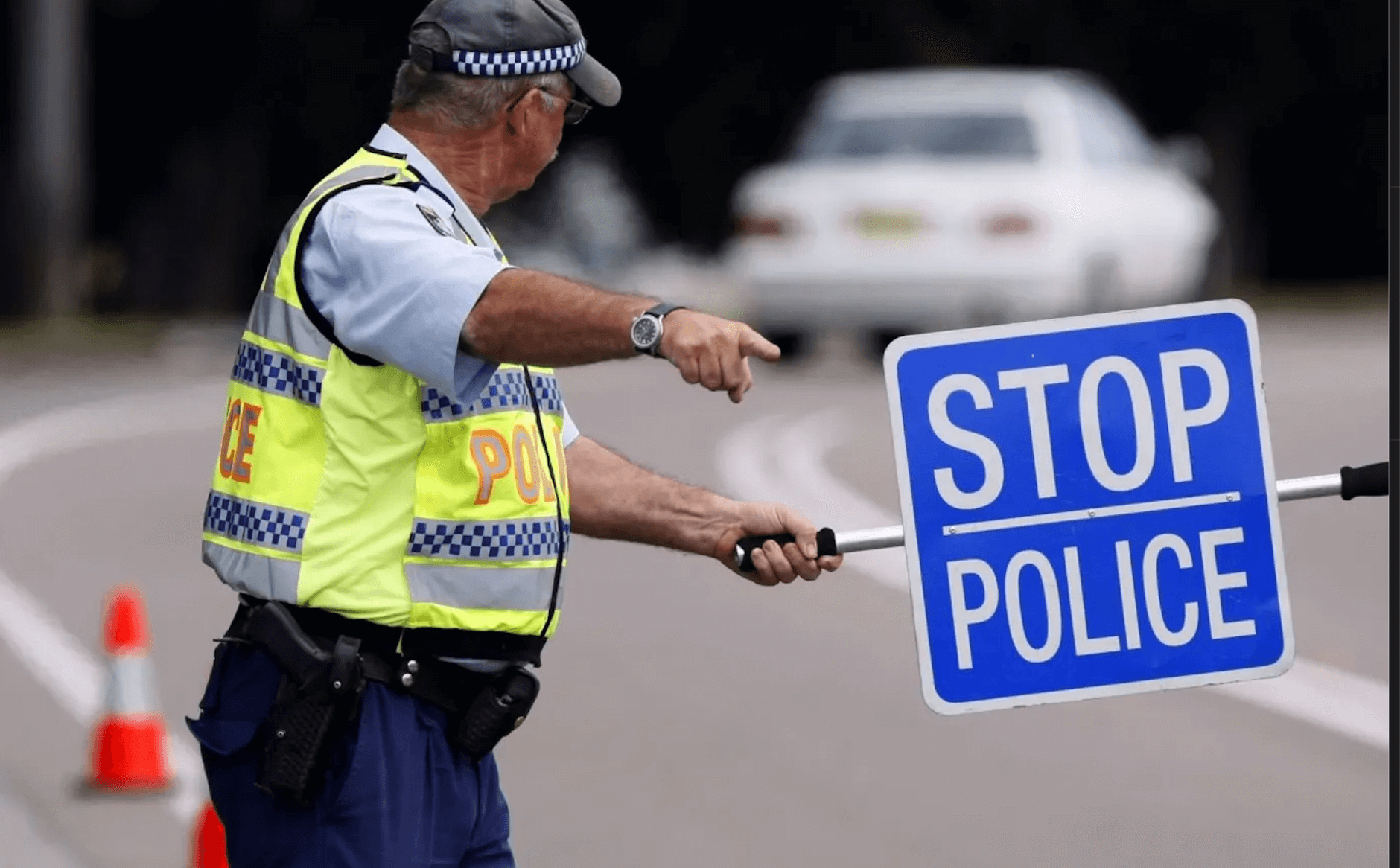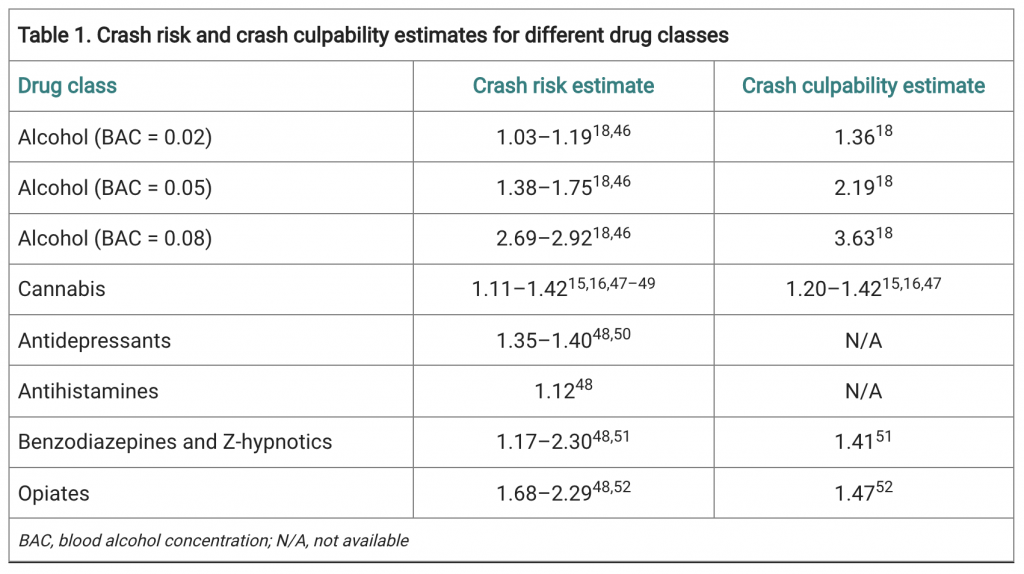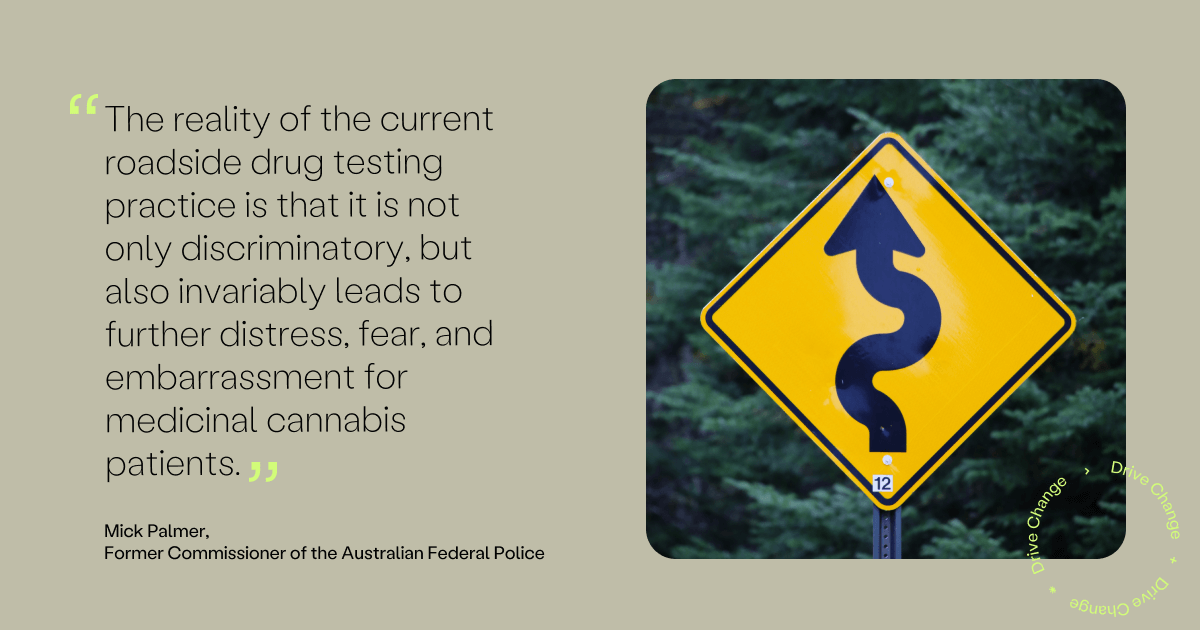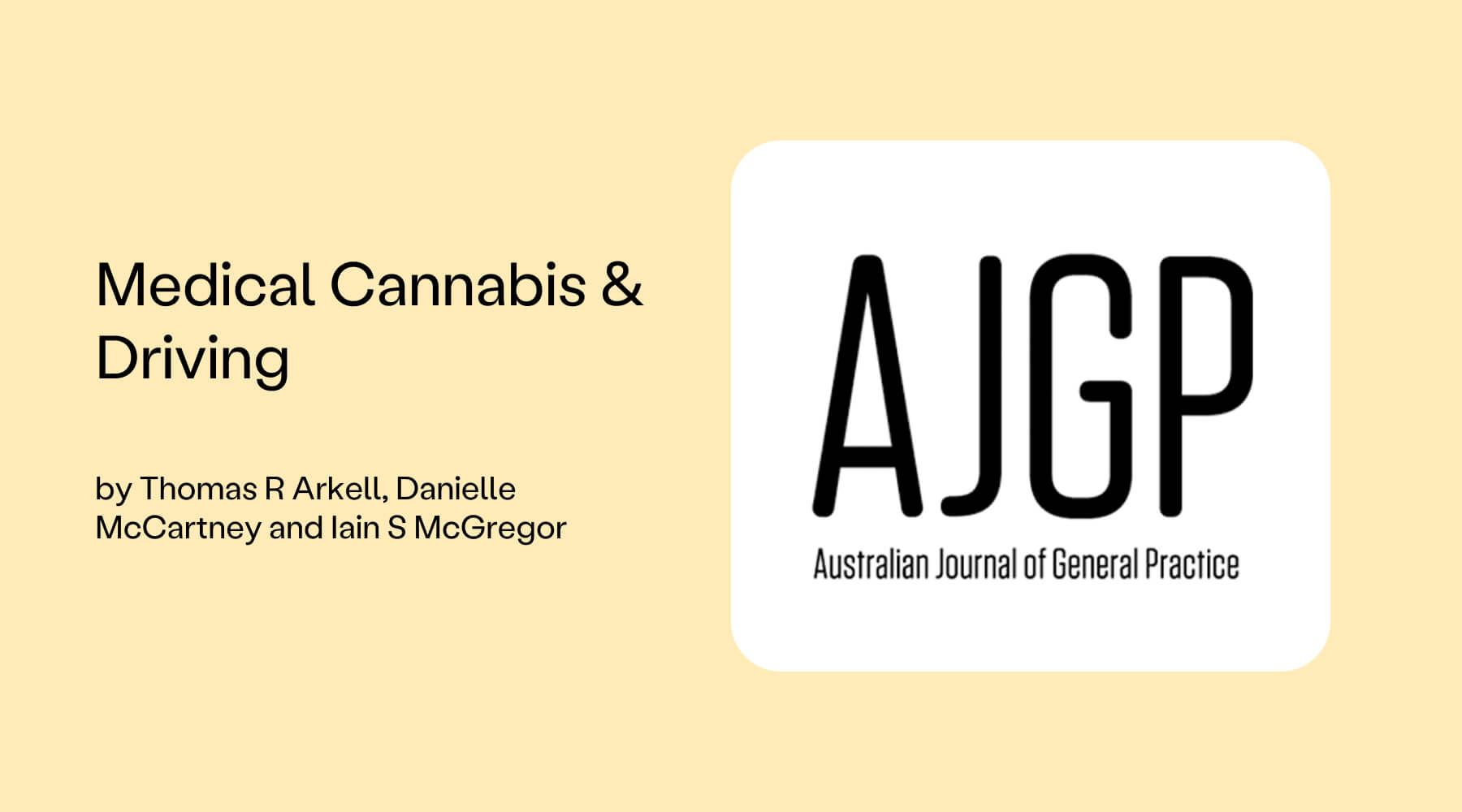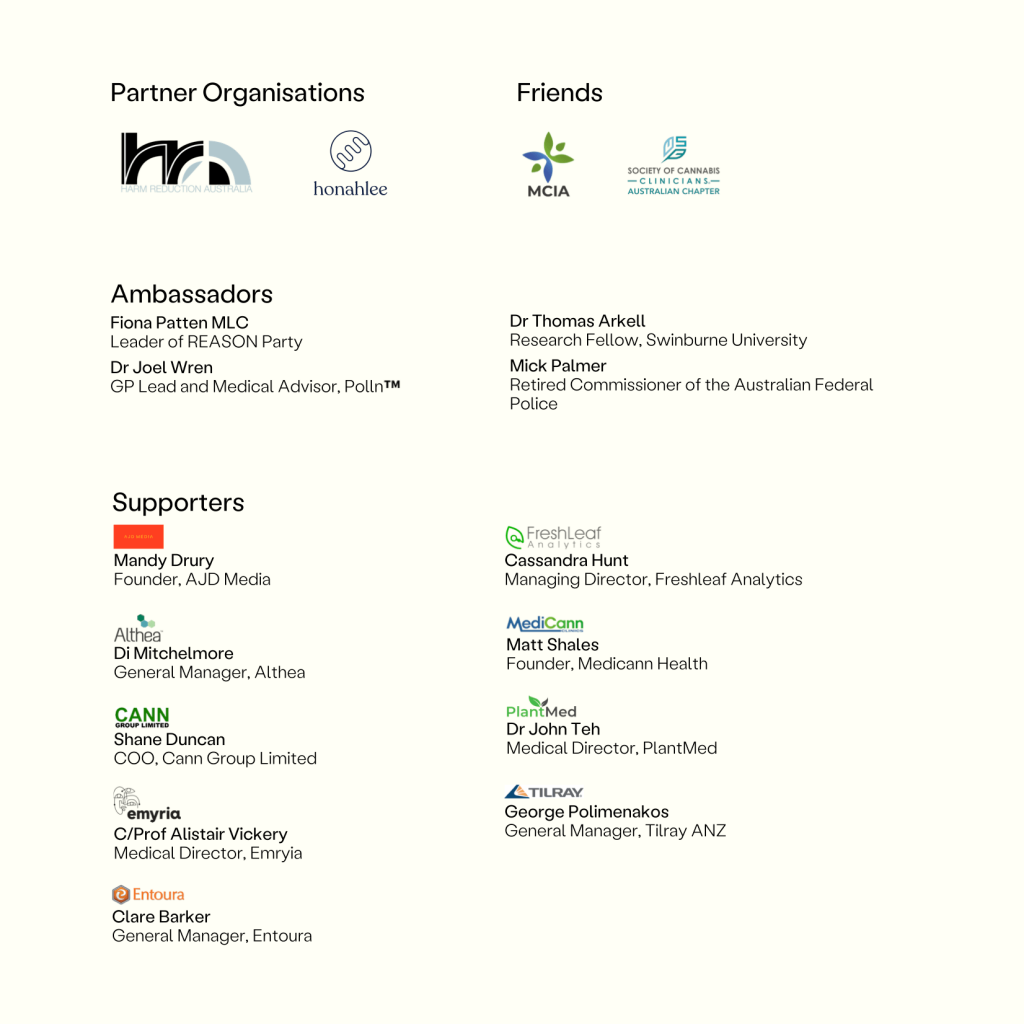
.
The below article penned by Perth-based workplace lawyers appeared in the West Australian on 18 August 2023. It catastrophises the brave new world of Medicinal Cannabis permeating our everyday lives, including our working lives.
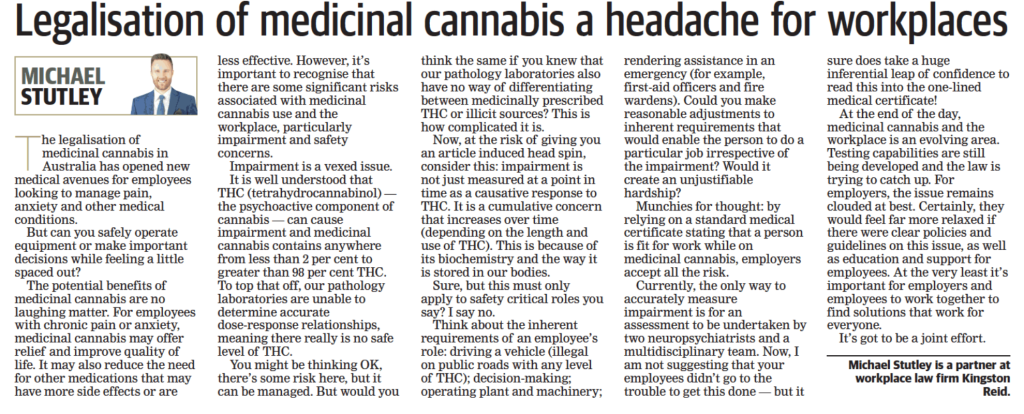
It is an interesting piece but also a bizdev exercise that deserves a swift rebuttal from Drive Change alongside some general commentary on a couple of points where we somewhat agree.
One line medical certificates doled out by telehealth-only operators are not useful in broadening corporate and industrial acceptance of cannabinoid therapeutics. CBD and THC are viable treatment options for people where past use of SSRIs, benzodiazepines, opioids, gabapentinoids and quetiapine (to name but a few other types of impairing drugs) has not alleviated the symptoms being treated or caused intolerable side effects.
Online-only operators need to go that extra step in dealing with employers. Not ditching patients caught in a bind would be useful also. Providing patients with something more than one line or tangental boilerplate on why you can’t provide a more detailed letter without physical examination. Failing to offer something beyond the bare minimum for telehealth patients caught up in workplace drug testing issues is, being blunt, a dick move.
In a post-Covid industrial world where battle lines are now being drawn over WFH (work from home), employers also need to get to grips with the fact that many workers utilised the lockdown era as a chance to finally taper off the many prescription drugs that were harming not helping them. Mainly SSRIs if you place any stock in the wonderful world of Reddit and closed social media groups for persons tapering off X drug.
The lockdown era assisted many in dialling back on poly-pharmacy generally. The chronic-insomniac-in-lockdown had leeway for some intentionally rough nights withdrawing from benzos because they knew that holding it together in a Zoom meeting the following day was doable. But fronting up to the office in person, forget it. The warehouse worker who was reliant on opioids to get through each shift was able to dial back their dose of oxycontin to half (and gradually decreasing). For those enduring SSRIs withdrawals, the privilege of being able to weather acute attacks of the zaps & sweats in the foetal position in your own bed and not a toilet cubicle at the office, was a blessing. WFH enabled many a third or fourth attempt at tapering off to be the final one.
This growing demographic have either managed the tapering off with zero pharmacological assistance or they have done so with one or a combination of any of the dozens of promising treatments for the above conditions from cannabinoids to psilocybin to MDMA (and anything else likely to be approved by the TGA/FDA in the coming decade).
So there’s an emerging number of people with THC going into in their system (as prescribed) at some point in any given 24-hour period, in almost every workplace in the country right now.
How should David Brent/Michael Scott as man on the Clapham Omnibus deal with cases like:
- THC prescribed outside of working hours with reasonable reliance to be had on communications from the prescriber as to a minimum 12 hours between onset of impairment and sitting down at their desk the next morning.
- A worker disclosing their being prescribed a minimal dose of THC, where the the therapeutic intent is that the effects of CBD are more pronounced when a dash of THC is added (ie someone prescribed a 3:150:50 THC:CBD:CBG and zero prospect of them being even remotely impaired).
- Cases dealing with management of physical pain where a very low dose of THC is clinically defensible and no cognitive effects are likely to be discernible.
- Cases where a request for use of THC during work hours, on work premises, would on any view of the full facts, be unreasonable.
- WFH and daytime dosage prescriptions for THC that, as a result of traditional cannabis stereotypes, causes an employer to raise a concern at the cognitive ability of a worker to perform their obligations and produce deliverables within the timeframe required.
How to maintain consistency with consumption of alcohol policies / other prescription drugs?
How to ensure safe workplaces for everyone? Not just Joan for HR or other examples provided, but the people who have to work with them. In Slough UK or Scranton PA, we need a sensible approach to what is essentially, a worker taking their prescribed medication as directed.
Employers want to head off Van and Munter’s life dream of ripping bongs at work. The tea break was arguably the earliest workplace right achieved in the Industrial Revolution. The owners of the means of production figured out that a caffeine and dopamine boost in the afternoon actually boosted overall productivity and reduced accidents. All that from a plant hey?
What parameters ought be set around environments where a sudden onset of a moderate to high dose of THC causes a person to become a WHS risk? What arguments in favour are there for such a scenario to be viewed separately from the sudden onset of large amounts of alcohol?
If Joan from HR is recovering from surgery or managing chronic pain and if Joan does nothing but sit at a desk and work, then the risk level is not the same as office drinks, on office premises. It is certainly possible to take a low dose of THC that treats pain whilst at the same time does not cognitively impair due to being balanced out by other cannabinoids, plus if Joan is a trooper, many years of tolerance. Maybe “the good biscuits with cream” start disappearing from the kitchen at a faster rate. That surely is about the worst of it for Joan.
We expect employer solicitors will seek to argue that it is an unjustifiable burden on an employer to have people at the risk of known/unknown impairment by way of THC on work premises during any WHS misadventure/event. What is the worst case scenario? Tony from Marketing sprinting back into a fire to rescue the Peanut M&Ms he put in the fridge that morning? Perhaps employers will argue that people who consume THC over time, even at low doses, believe themselves to be inflammable. We don’t really know and we won’t really know until such outlier cases happen, if indeed, they ever do.
If Joan from HR isn’t impaired by THC then it doesn’t require an extra fire warden to carefully shepherd her down the fire escape even if Joan can’t be designated as one herself.
However if Joan was WFH and needed to bump up her THC dose a bit higher to manage a flare up and was then physically impaired but capable of working at a keyboard and doing her job, are there any WHS angles that restrict her from doing that?
These are things we need to figure out so we thank Messrs Kingston Reid for extending the conversation.
As MC makes further in-roads, employers will, on-the-whole, gradually become more accommodating to it or else it will cost them good employees. It already is. An employer’s level of tolerance to MC will no doubt be connected with any associations (positive or negative) with productivity first and safety second, because that’s how our current economic system rolls.
Operating vehicles on public roads?
Let’s start with the one point in this article that we all agree on. Mr Stutley is sort of correct when he says that from a WHS (work health and safety) perspective, where the job role requires driving on public roads or having a clean license then any workplace lawyer looking to argue reasonable accommodations for a worker on prescribed THC is going to be hamstrung by drug driving laws generally IF driving is part of the job or IS the job. This is why Drive Change is branching out into the workplace sphere. There are collaborative solutions to be had by continuing the workplace and MC conversation.
There are serving police officers in WA, prescribed MC for PTSD who have been accommodated on reasonable adjustments for five years now. They don’t punt them from the force. They just don’t let them drive or do any actual policing whatsoever and restrict them to administrative desk duties. It’s not an ideal life for someone recovering from PTSD caused from being a front line worker but at-least the mortgage keeps getting paid.
Where “not driving” can be accommodated without an employer incurring a loss, then it ought be a reasonable adjustment in the best interests of retaining a valued employee.
Employers can’t tell the diff btw prescribed and illicit THC?
If the worker has a prescription from a doctor stating the workers is prescribed THC then that is the only thing that matters re identifying the source of the THC.
Would any employer, anywhere in Australia, dare question the providence of opioid metabolites in an employee’s urine where that employee produced medical evidence indicating the drugs were prescribed? No. Cannabinoids ought be afforded the same “presumption of safe prescribed use.”
THC impairment is a cumulative concern that increases over time depending on the length and use of THC?
We would be happy to see the studies that KR base this opinion on. We know of one massive resources employer that recently instituted a policy on prescribed THC that relied on this ground also (cumulative use). The argument is that over time, persons who consume THC on a daily/nightly basis become an impairment risk 24/7. This, to the best of our knowledge, is predicated on studies done in the mid 1970’s where chimps and other animal subjects were forced to smoke 70 joints a day. BUT, we’d be keen to see whatever studies Mr Stutley has viewed and adjust our views accordingly. It is not at all unsurprising that studies which made the subjects consume stupidly high-THC cannabis reported adverse outcomes for the trial participants.
The overwhelming majority of medicinal cannabis patients are being prescribed cannabinoid ratios with nowhere near enough THC to replicate the exceedingly high doses of THC that the earlier cannabinoid research is predicated upon. Prohibition era scientists did a lot of work that doesn’t stand up to scrutiny against the measurable harm reduction results being achieved by doctors and other medical practitioners working in The Australian System of scheduled cannabinoids as medicines available via prescription.
Right now, let’s take the hill in front of us. We at Drive Change are specifically looking for cases where medicinal cannabis patients are only consuming THC at night with the minimum 12-hour break (and solid sleep) before fronting up to work the next day (invariably fresher after a sleep on CBD:THC and without day-after benzo/sero/z-class fog).
No-one, right now, would have buckleys of reasonable accommodations being made so they can consume an impairing dose (whatever that may be for that person) of THC on the job. Obviously for any manual job involving heavy machinery or heavy things moving on tracks at speed, this will always be out of the question. Whatever your prescription says, it is unconscionable to get high/medicated on THC when you’re working around other people in high risk environments. All it will take is one idiot to do this and other workers to die or be seriously injured and the cause of “Not Having to take SSRIs for the Rest of My Life” (with all the emerging risks that entails) will be set back years. That’s a cause example picked at random. There are hundreds of them that find their way to Drive Change the right to drive and the right to work so often comes down to one really shit choice:
“Do I have to keep taking [X Inneffective and/or Dangerous Prescription Medicine] for the rest of my life in order to be able to hold down my source of income?”
A Melbourne Storm Fan named Will Williams.
The discussion on reasonable adjustments and what is/is not an unjustifiable hardship needs to be had.
For the clerical and administrative and legal classes (office workers), meds that prevent you from operating heavy machinery ought be none of the bosses business when you solely punch a keyboard and click a mouse all day. There are 1001 ways to get out of fire warden duty so this risk is minimised for all parties concerned. One should always seek independent legal advice on these things and this article is most certainly not independent legal advice. Every worksite/office has an overlay of land law/lease restrictions and varied obligations to who can/cannot be on the premises.
The Fire Warden Argument?
This is literally the only THC and WHS issue that we can think of re white collar work/standard office environments. Perhaps Gerald from Accounts could be a risk if he puffed on a THC cartridge break on smoko, then accidentally spilt boiling hot coffee on Joan from HR. This West Aus piece frames it as being the sort of scenario that would require an employer to make unreasonable accommodations for a worker on prescribed THC by NOT making them the fire warden or a first aid officer. Let’s perhaps explore the class of persons ordinarily excluded from being fire wardens or first aiders (or temporarily excluded from acting in those capacities due to a temporary impairment). Let’s look at what sort of accommodations get made there and weigh up how much of a costs imposition they are.
The THC and WHS risks for office environments are, from a workplace insurer’s perspective, likely to be treated same as alcohol. Firstly, in standard office environments, it is no more an employer’s business as to whether an employee has been prescribed an opioid or a cannabinoid. Secondly, the West Aus argument that medicinal cannabis creates an unjustifiable hardship on employers who need to rotate people on/off a First Aiders/Fire Warden roster is certainly headline grabbing.
Vape cartridges on the sly combined with office drinks might get messy though. It might also result in people consuming much less alcohol and less boozy work culture all around. Who knows, this may result in greater productivity.
What are the issues with WHS insurers and office environments?
At the heart of it is the scenario where a white collar employer, by their conduct, acknowledges that a worker is on prescribed THC whilst at the same time knowing they have no sure-fire way to determine impairment should it ever become an issue should “shit happen.”
IF there is a WHS issue, then this is going to be a risk. However, it’s not the inflated risk that West Aus makes it out to be in standard office environments. The fire warden thing is an outlier scenario.
Two neuropsychiatrists and an interdisciplinary team to determine THC impairment?
Again, would be keen to see whatever literature they base this one on but it honestly wouldn’t be surprising if a bunch of psychopharmacology-neuropsych boffins validated their own existence by creating a set of standards and procedures and published them with the barest skid mark of peer review.
Irresponsible people who are stupidly high on THC during working hours will always get caught out by everyman detection methods. Smell, eyes and behaviour. How those initial conversations go are key for any worker should “shit happen.”
Although roadside swabs have their own faults, we here at Drive Change have heard of employers within the medicinal cannabis industry going to the extra expense of acquiring high-end oral swab tests that can reliably detect THC consumed within the last 72 hours and combining those swabs with various forms of manual impairment testing. That is some progress at-least.
It really isn’t an unreasonable expectation for employers to expect employees prescribed THC products to not consume them and come to work high.
An inferential leap of confidence to read this into a one-liner medical certificate?
Here is where we also partly agree with Mr Stutley. One liners or bare minimum letters stating the product names and dosages are not helpful. This is why the first step after a failed workplace drug test is to get the worker into an MC prescriber that has F2F capacity for the purposes of obtaining the sort of letter that lessens the length of the inferential leap that an employer is asked to take.
Is it too much to ask in 2023 for employers to trust their employees will only consume their meds in accordance with the detailed instructions provided in a properly set out doctor’s letter? This has been the standard course of action for opioids, benzos, gabapentinoids etc. No one cares about SSRIs because so many people are on/off them at one point in time or another that society would collapse if everyone had to come off them. With the exception of acute withdrawal phases, it’s fair to presume that they are not ordinarily deemed impairing (even if you lock your keys in the car a dozen times in three weeks and regularly lose things). SSRIs make people forgetful and foggy. To the extent they become a WHS risk? Perhaps one day we will find out.
Medical certificates involving a tick n flick done over the phone or online? Fair to query what kind of employer would accept that at face value without something else to provide a more fleshed out expectation about what the overall WHS risk would be. Products, dosage, timing. Product names like Super-Wizz-Bang-Cherry-Sherbert-Rainbow Kush do not help the cause of corporate-industrial integration of cannabinoid therapeutics also.
However it’s grossly unfair to question the origins of the THC in a positive workplace drug test where a prescription is provided.

